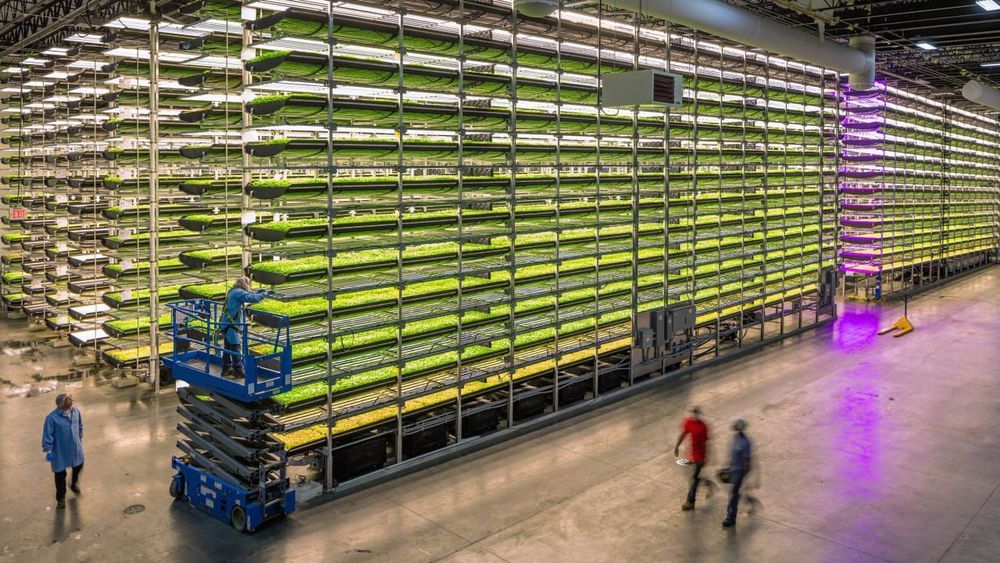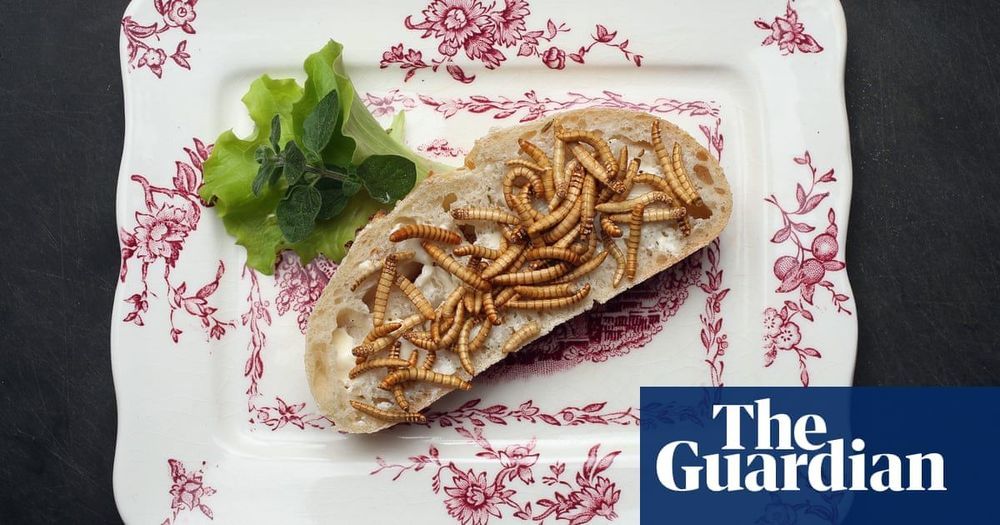The ‘bionic’ girl who doesn’t eat, rarely sleeps and didn’t even feel pain.
Category: food – Page 238


Expert Disaster Preppers Explain How to Ride Out the Coronavirus Pandemic
For guidance in this time of uncertainty, we spoke with five expert preppers about what they’re doing to ride out the pandemic, how they’ll be ready for whatever comes next—and how you can be too.
Long lines outside grocery stores. Aisles stripped of canned food, toilet paper, and hand sanitizer. A fast-moving pandemic disease that, as of last week, was infecting more than 30,000 people every day.
Just a month ago, such a situation was unimaginable for most of us. But for disaster preppers, it’s precisely the scenario they’re determined to be ready for.
“I’m from a very old Appalachian family. Even before the word ‘prepper’ was a term, we were always putting back stuff and being ready in case we couldn’t go to the store,” says Samantha Biggers, who hardly fits the stereotype seen in TV shows like Doomsday Preppers. Biggers is a tattooed, 36-year-old farmer in North Carolina who brews her own beer and shears her own sheep. That’s a far cry from a wild-eyed paramilitary man living off-grid in a bunker designed to weather an EMP blast.

The role of global cooperation in space after COVID-19
The coronavirus pandemic has resulted in the deaths of tens of thousands of people across the globe. It is also causing huge damage to the global economy. According to the predictions of the International Monetary Fund (IMF), 2020 could be the worst year since the Great Depression in the 1930s, with more than 170 countries likely to experience negative per capita income growth due to the pandemic. Countries are taking different measures to mitigate that economic impact, depending on the situations in their countries. However, the process of overcoming economic crisis is going to be extremely difficult. Few businesses would find it hard even to sustain and there is going to be a significant upsurge in unemployment rates.
Like much of the rest of the world, India is under lockdown. It is bit premature to predict the exact impact of coronavirus crisis on the Indian economy since the situation is still evolving. However, it is clear at this stage that the country will be facing major economic downturn and levels of unemployment will steeply rise. The government has already offered an economic package of 1.7 trillion rupees ($22.3 billion) in the last month for providing food security and money to the poor. It is expected that the government would shortly announce the next economic stimulus package.
All this would require the government of India to undertake a ruthless review of existing patterns of expenditure. The government budgeting caters to the requirements of various segments of the society, including agriculture, health, education, and railways. The budget has two other important areas of attention: defense and science & technology.

Nutrition interventions for healthy ageing across the lifespan: a conference report
Interventions that may slow ageing include drugs (e.g., rapamycin, metformin), supplements (e.g., nicotinamide riboside, nicotinamide mononucleotide), lifestyle interventions (e.g., exercise) and diets (e.g., fasting)
Thanks to advances in modern medicine over the past century, the world’s population has experienced a marked increase in longevity. However, disparities exist that lead to groups with both shorter lifespan and significantly diminished health, especially in the aged. Unequal access to proper nutrition, healthcare services, and information to make informed health and nutrition decisions all contribute to these concerns. This in turn has hastened the ageing process in some and adversely affected others’ ability to age healthfully. Many in developing as well as developed societies are plagued with the dichotomy of simultaneous calorie excess and nutrient inadequacy. This has resulted in mental and physical deterioration, increased non-communicable disease rates, lost productivity and quality of life, and increased medical costs. While adequate nutrition is fundamental to good health, it remains unclear what impact various dietary interventions may have on improving healthspan and quality of life with age. With a rapidly ageing global population, there is an urgent need for innovative approaches to health promotion as individual’s age. Successful research, education, and interventions should include the development of both qualitative and quantitative biomarkers and other tools which can measure improvements in physiological integrity throughout life. Data-driven health policy shifts should be aimed at reducing the socio-economic inequalities that lead to premature ageing. A framework for progress has been proposed and published by the World Health Organization in its Global Strategy and Action Plan on Ageing and Health. This symposium focused on the impact of nutrition on this framework, stressing the need to better understand an individual’s balance of intrinsic capacity and functional abilities at various life stages, and the impact this balance has on their mental and physical health in the environments they inhabit.

Abu Dhabi is investing $100 million in indoor farming as it tries to become more resilient
The farm, the first in the world to commercially grow tomatoes solely under artificial light, is one part of a push to transform food production in the United Arab Emirates, where 80% of food is imported.
With little water, scorching temperatures, and not much arable land, the UAE currently imports 80% of its food. Can it go local?

DARPA program looks to use biotech to prevent jet lag and diarrhea
DARPA is planning to develop a travel adapter for the human body. Called the ADvanced Acclimation and Protection Tool for Environmental Readiness (ADAPTER), the new program aims to produce an implantable or ingestible bioelectronic device to help soldiers handle jet lag and diarrhea.
Anyone who has traveled extensively knows that jet lag and diarrhea are not jokes. Jet lag and other sleep-cycle disruptions such as shift work can impair alertness and athletic performance, and cause disorientation, fatigue, indigestion, irritability, insomnia, and excessive sleepiness. Meanwhile, travel diarrhea can produce symptoms that range from unpleasant to severe.
This is bad enough for tourists or business people, but for soldiers jet lag and diarrhea can be a real hindrance as hundreds or even thousands of soldiers can be deployed to the other side of the world at a moment’s notice, only to end up running so far ahead of the logistical chain that they have to rely on local food and water instead of standard military rations. The end result is soldiers impaired by disrupted sleep cycles or requiring medical attention for intestinal problems as a result of consuming contaminated food and water.

Resveratrol and Other Polyphenols Support Genomic Stability
New research shows that resveratrol, a chemical found in red wine, contributes to genomic stability by reducing the occurrence of DNA double-strand breaks and prolongs lifespan in genetically modified mice that are prone to carcinogenic mutations [1].
DSBs and genomic instability
Genomic instability, one of the hallmarks of aging, is a condition characterized by frequent mutations within the genome, and it has long been associated with cancer [2]. The authors of this study state that one of its major causes is the erroneous repair of DNA double-strand breaks (DSBs). High numbers of DSBs have been found in pre-cancerous cells, and DNA lesions caused by unrepairable DSBs accumulate with time, both in organisms and in cultured cells. One of the possible culprits is the degradation of DNA repair mechanisms in aged cells [3].

Edible insects set to be approved by EU in ‘breakthrough moment’
The ruling is likely to lead to the final authorisation of their sale across the EU as a “novel food” by as soon as the autumn, opening up opportunities for mass production of a range of insect dishes to be sold across Europe for the first time.
Food safety agency’s decision could put mealworms, locusts and baby crickets on menus.
ENDING SMOKING In This Generation
Dr. Derek Yach, Founder, President, and Board Member of The Foundation for a Smoke-Free World (FSFW), joined me on ideaXme (http://radioideaxme.com/) to discuss his group’s work in the core areas of Agriculture and Livelihoods, Industry Transformation, and Health, Science, and Technology (Disclosure — FSFW is funded ~$US1 Billion by Philip Morris International, but take a listen to full story…) — #Ideaxme #Smoking #Vaping #Tobacco #Cessation #AlternativeUses #HarmReduction #WHO #CDC #Health #Wellness #Longevity #Biotechnology #LifeExtension #Aging #IraPastor #Bioquark #Regenerage World Health Organization (WHO) CDC CDC Global United Nations Philip Morris International.
Ira Pastor, ideaXme life sciences ambassador and founder of Bioquark, interviews Dr. Derek Yach, founder, president, and board member of The Foundation for a Smoke-Free World, and passionate advocate for health promotion and disease prevention. Dr Yach’s objective is to end smoking in this generation. We investigated to see how that might be achieved.
Disclosure: The Foundation for a Smoke-Free World has received its initial funding pledge of $80 million USD annually for 12 years, beginning in 2018 from Philip Morris International (PMI) — The Foundation has a nonprofit status as a US 501c3 organization, and by law and policy must operate completely independently from PMI, and cannot engage in activities designed to support PMI’s interests. Further, PMI can have no involvement or say in their work.
Ira Pastor Comments:
The World Health Organization (WHO) estimates that we currently have over 1.1 billion smokers on earth, and that tobacco kills more than 8 million people each year. More than 7 million of those deaths are the result of direct tobacco use while around 1.2 million are the result of non-smokers being exposed to second-hand smoke.